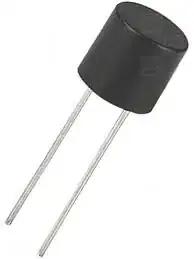They're parts which have a weakness that will cause them to go first in case of something goes wrong in the circuit.
The fuse is the archetype of a sacrificial component. The most common use of a fuse is at the power supply stage of a device. Connecting the wrong voltage, like 230 V AC instead of 115 V, will blow the fuse, and prevent (much) damage further on. The fuse may also protect against further damage if the circuit goes haywire. When I worked with Philips Audio we used TE5 fuses inside circuits for protection.

There are sockets for TE5 fuses, but we usually soldered them, to prevent DIYers to replace them. It also helped that (until now :-)) TE5s are not directly recognizable as being fuses. When a fuse inside a circuit blows that's often because another component failed. Just replacing the fuse may cause other components to go before the new fuse blows. And so on. That's why just replacing the fuse is not always a good idea.
A fusible resistor differs from the fuse in that it also has the function of a passive component.
"In the conventional wirewound resistor, ceramic rod at the resistor's core acts as a heat sink for the wire element. This can delay
fusing, resulting in high temperatures to fragment the coating and ionize the air near the fusing spot. If ionization occurs close
to the cap edge and at a voltage peak in the mains cycle, it can initiate a momentary flashover outside the component body,
releasing far more energy than is required to fuse the wire element. Although the opening of the circuit is safe for most
applications, it can be with a “bang” with splattering of cement coating. This is un-safe operation and not desirable."
(from this datasheet)
The difference between a sacrificial component and a normal one is that the sacrificials are designed to fail in a highly predictable way. A fuse is not just a too thin wire, it's a more sophisticated component than it looks.
I can't think of other sacrificial components right now. I'm not sure I would call Nick's opamp buffer one. Like I said sacrificial components should be designed to fail predictably, and an opamp isn't. Nobody can guarantee it will stop an input overvoltage from proliferating through the circuit.
MOVs and other overvoltage protectors aren't sacrificial either because they're not designed to fail when an overvoltage occurs. On the contrary, they will happily (well...) take current peaks of thousands of amperes without failing. They're protection devices, but not sacrificial.
